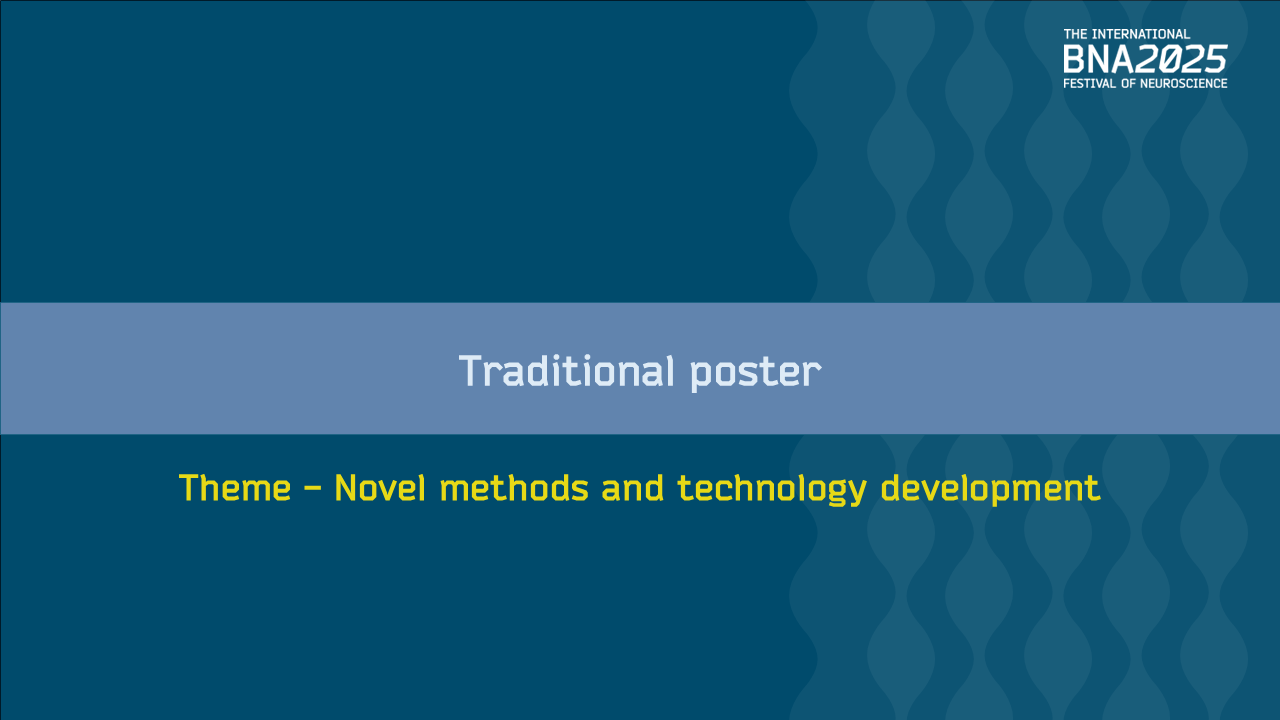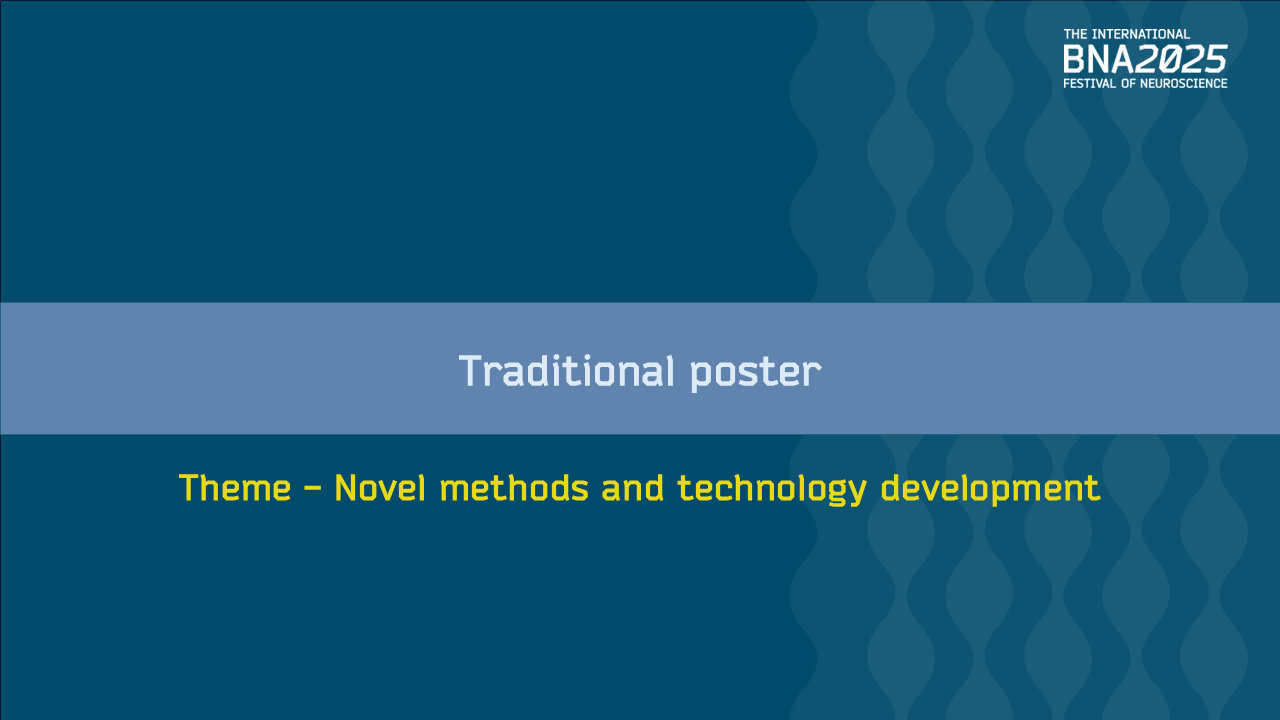

W_PW_287: User interface refinements and quality assurance assessment in an updated popular tissue vibratome
Wednesday, April 30, 2025 11:45 AM to 1:15 PM · 1 hr. 30 min. (Europe/London)
Poster Zone 4
Traditional poster
Brain SlicesVibrating MicrotomeVibratome
Information
Vibrating microtomes (vibratomes) are indispensable tools in neuroscience research, enabling precise sectioning of delicate biological tissues for histological and electrophysiological studies. In recent years, significant technological advancements have been made in vibratome design and performance. Enhanced vibration frequency control, blade oscillation stability, and precision cutting technology have improved tissue section quality. Equally, ease of use plays an important factor in the efficient and ergonomic use of vibratomes, which can be for extended periods of time. Here we report refinements of the graphical user interface (GUI) of a popular vibratome (the 7000smz) manufactured by Campden Instruments (Loughborough, UK) and initial field trials of brain slice preparation in several independent neuroscience laboratories.
From a user perspective, the updated GUI provided a convenient, flexible and intuitive platform with which to prepare brain slices of varying thicknesses from both mice and rats. Front and back windows for tissue sections can be determined, as can whether slicing occurs manually or in an automated fashion. The on-the-fly thickness settings allows section thickness to be cut iteratively, avoiding missing small regions of interest.
Preparation of hippocampal slices from juvenile male SD rats with the standard reusable stainless steel blades yielded high quality tissue (200µm) for immunohistochemical staining of microglia (Iba1) exposed to LPS, and 400µm horizontal hippocampal slices for extracellular recordings of the effects of tau on carbachol-induced oscillatory activity in area CA3. Sectioning the brainstem (50µm) of 6-8 month-old male and female C57BL/6 mice with kainic acid-induced epilepsy was followed by immunohistochemical staining for microglia (Iba1) and astrocytes (GFAP) to visualize cellular morphology and perform quantitative structural analysis of these brain cells. Using a ceramic blade, sagittal and horizontal male and female Wistar rat brain slices (p21-p300) were prepared for patch-clamp recordings of hippocampal and cortical cells (350µm), and LFP recordings (450µm) of theta and gamma oscillations in the hippocampus. Tissue, image and electrophysiological recordings were at least comparable with those prepared with the 7000smz.
Overall, the interface of the new Campden 9000smz is an improvement on the previous GUI and will lead to more rapid learning and likely to exploring the additional sectioning capabilities of the instrument. Coupled with zero-Z deflection compensation and ceramic blades should make the 9000smz a versatile vibratome for the preparation of a variety of fresh and fixed brain tissue of high quality.
*Authors listed alphabetically and contributed equally.
From a user perspective, the updated GUI provided a convenient, flexible and intuitive platform with which to prepare brain slices of varying thicknesses from both mice and rats. Front and back windows for tissue sections can be determined, as can whether slicing occurs manually or in an automated fashion. The on-the-fly thickness settings allows section thickness to be cut iteratively, avoiding missing small regions of interest.
Preparation of hippocampal slices from juvenile male SD rats with the standard reusable stainless steel blades yielded high quality tissue (200µm) for immunohistochemical staining of microglia (Iba1) exposed to LPS, and 400µm horizontal hippocampal slices for extracellular recordings of the effects of tau on carbachol-induced oscillatory activity in area CA3. Sectioning the brainstem (50µm) of 6-8 month-old male and female C57BL/6 mice with kainic acid-induced epilepsy was followed by immunohistochemical staining for microglia (Iba1) and astrocytes (GFAP) to visualize cellular morphology and perform quantitative structural analysis of these brain cells. Using a ceramic blade, sagittal and horizontal male and female Wistar rat brain slices (p21-p300) were prepared for patch-clamp recordings of hippocampal and cortical cells (350µm), and LFP recordings (450µm) of theta and gamma oscillations in the hippocampus. Tissue, image and electrophysiological recordings were at least comparable with those prepared with the 7000smz.
Overall, the interface of the new Campden 9000smz is an improvement on the previous GUI and will lead to more rapid learning and likely to exploring the additional sectioning capabilities of the instrument. Coupled with zero-Z deflection compensation and ceramic blades should make the 9000smz a versatile vibratome for the preparation of a variety of fresh and fixed brain tissue of high quality.
*Authors listed alphabetically and contributed equally.
Theme
Novel methods & technology development